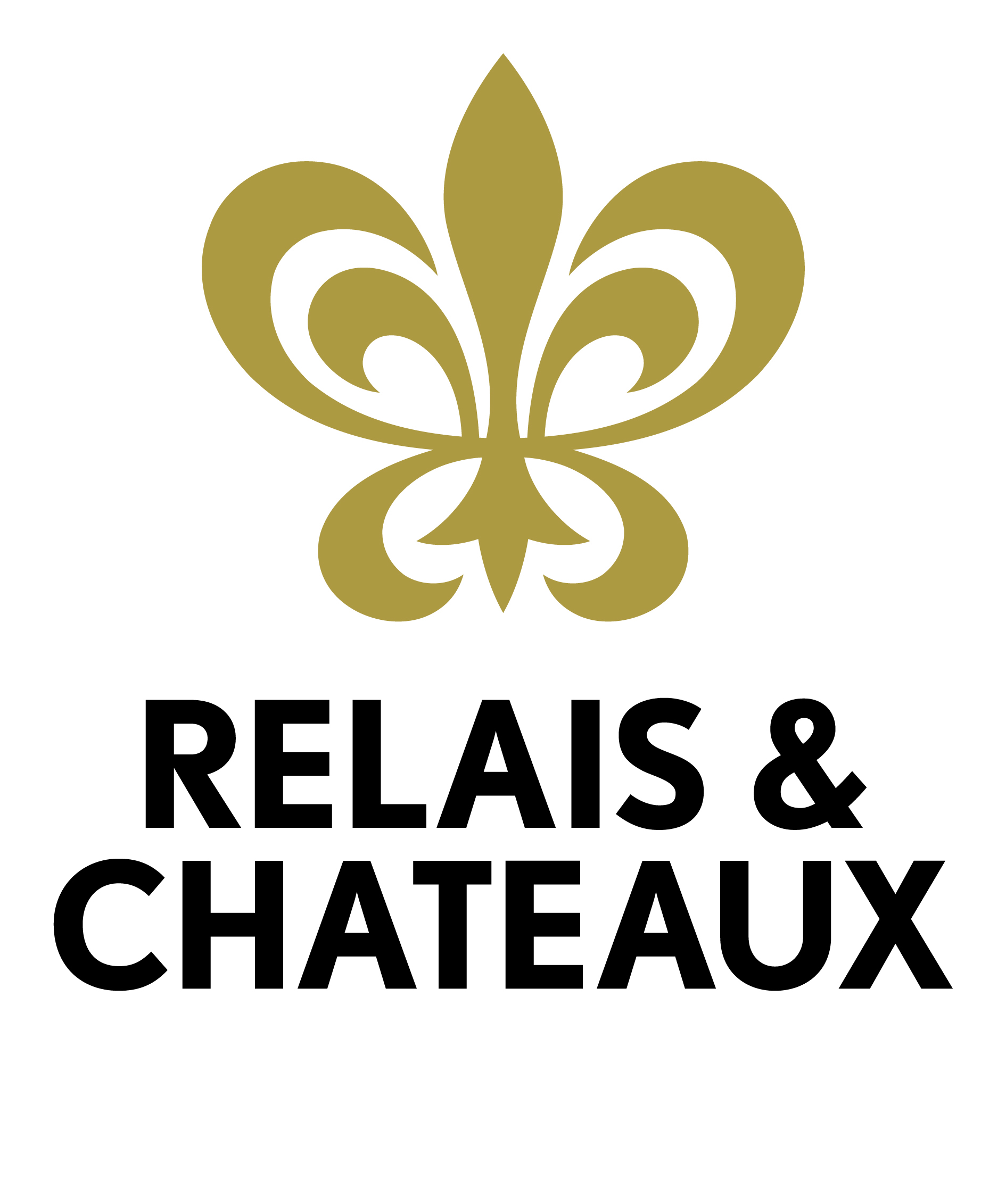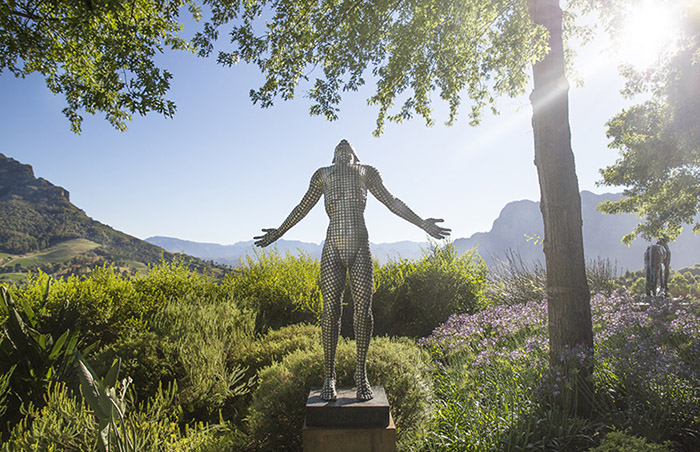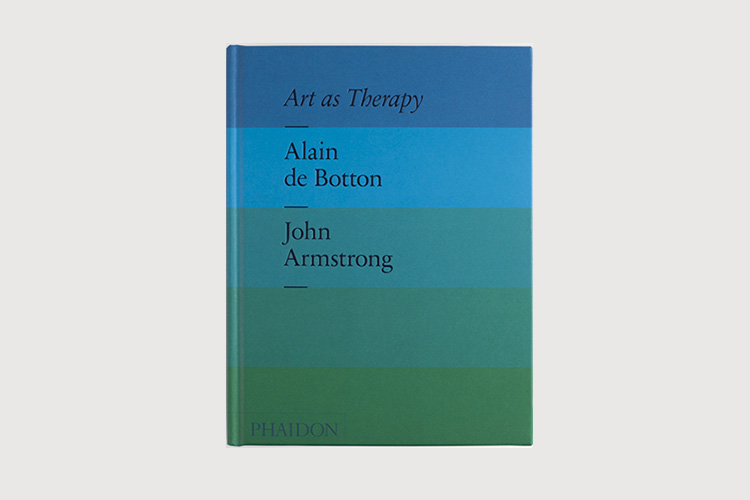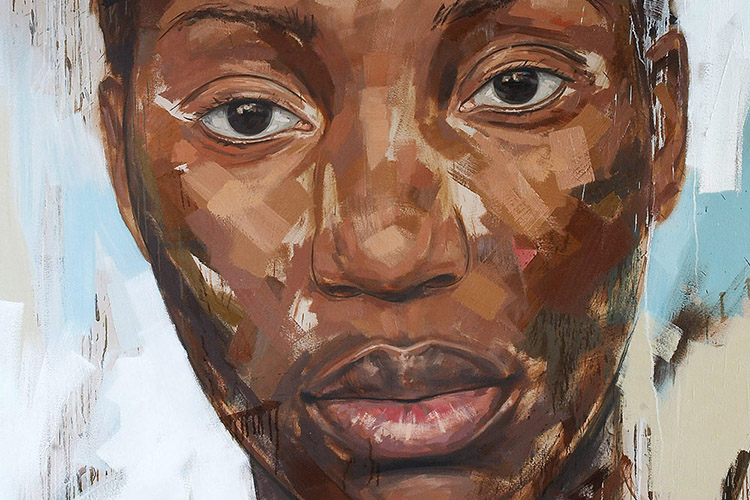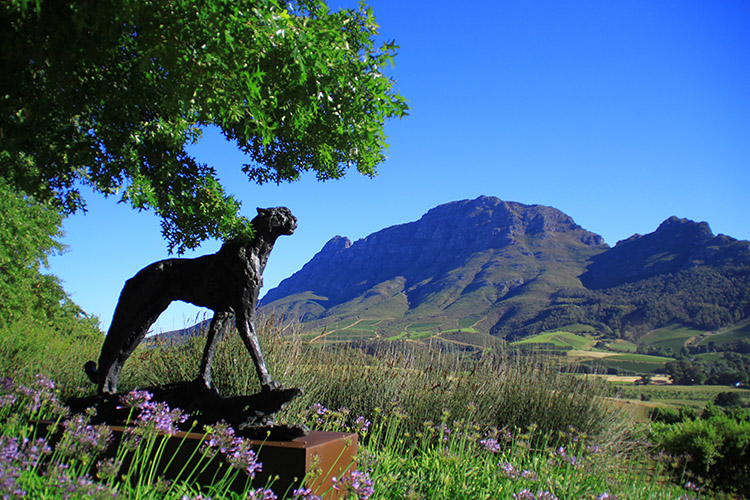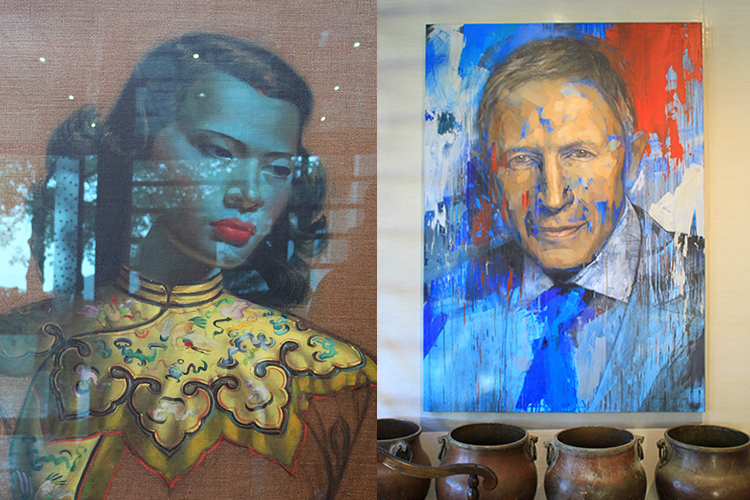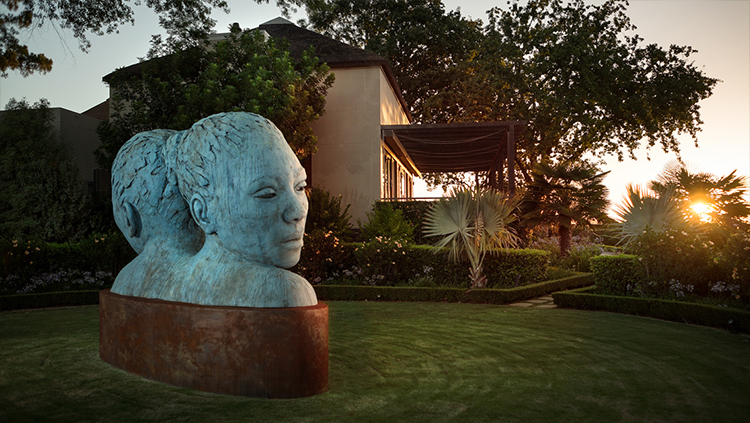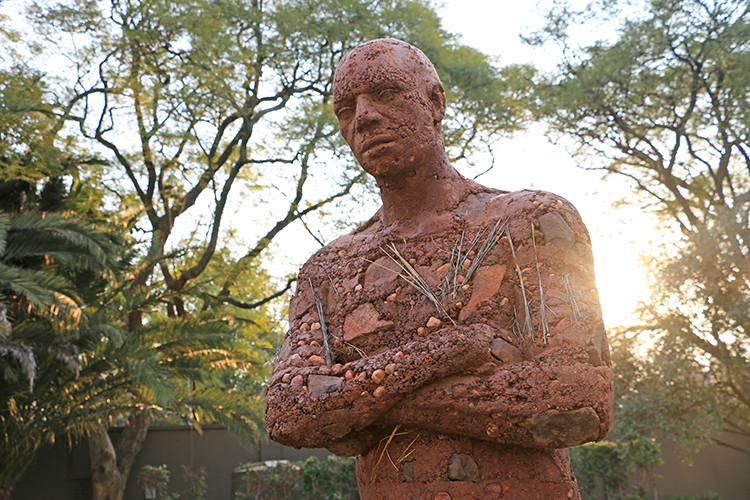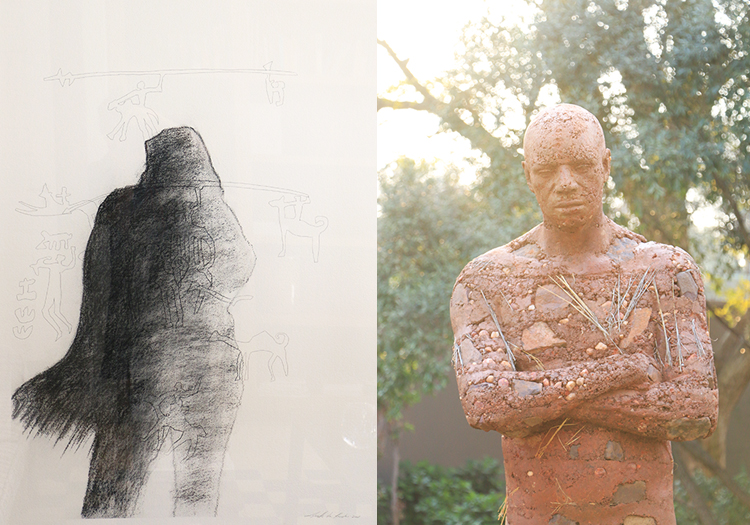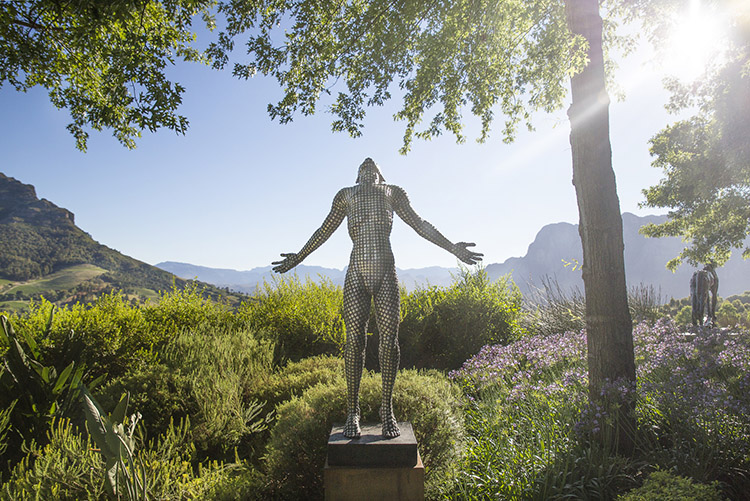
Above: Anton Smit’s Faith sculpture greet guests as they arrive at Delaire Graff Estate
Most of us start out in life as rather eager artists. Our first art studios are the creches or primary schools of our youth or the tables of our family homes (also, sometimes the canvas itself, along with the walls and bed linen for the more avant-garde little ones).
Our first materials are any pencil, pastel, play-dough or paint we can find; sometimes toes and fingers replace paint brushes, but the idea is the same. We engage in art for fun, as part of the explorations typical of childhood. Some of us create our art for chaos sake, or to express an emotion we don’t have words for, or that words are not enough for. Sometimes we do it for reward – the approving smile or words of affirmation from our teachers and parents. Not much has changed for the men and women of the brush or charcoal stick, clay or pottery wheel.
Art’s purpose, our purpose in pursuing art, goes far beyond the simple statement, “art for art’s sake.”
Alain de Botton, the Swiss-born, British-based philosopher and television presenter, sees art as a form of therapy. In his book, Art as Therapy, he proposes that art has a clear function: as a therapeutic tool to help us lead more fulfilled lives.
He concludes that the belief that art should be ‘for art’s sake’ has unnecessarily held back art from revealing its latent therapeutic potential and that it can, in fact, help us with our most intimate and ordinary dilemmas, such as: What can I do about the difficulties in my relationships? Why is my work not more satisfying? Why do other people seem to have a more glamorous life? Why is politics so depressing?
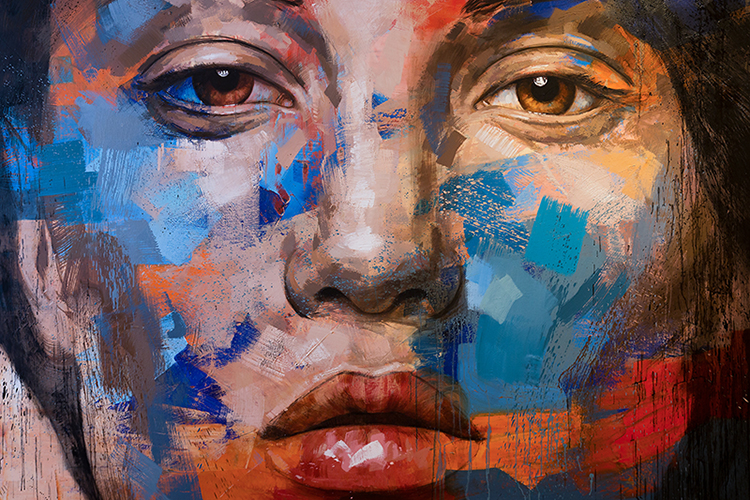
Above: Ellerman House
The book explains how to go about using art in this way, outlining these seven main functions of art below – to paraphrase from the book (if you’re interested in finding out more, click here):
- Remembering – Art makes memorable and renewable the fruits of experience, helps to keep precious things and our best insights in good condition and publicly accessible
- Hope – Art keeps pleasant and cheering things in view. It knows we despair too easily.
- Sorrow – Art reminds us of the legitimate place of sorrow in a good life so that we panic less about our difficulties and recognise them as parts of a noble existence
- Rebalancing – Art shows us the essence of our good qualities and helps rebalance our natures and direct us towards our best possibilities.
- Self-understanding – Art is a guide to self-knowledge and can help us identify what is central to ourseles but hard to put into words. We can hold up art objects and say, confusedly but importantly, “This is me.”
- Growth – Art is an accumulation of the experiences of others, the voices of other cultures, presented to us in well-shaped, well organised forms. Our engagement with it stretches our notions of ourselves and our world, introduces us to new ideas and attitudes, and so helps to enrich us, make us better versions of ourselves.
- Appreciation – Art peels away our shell and saves us from our spoilt, habitual disregard for what is all around us. We recover our sensitivity; we look at the old in new ways.
Try it out the next time you find yourself in an art gallery or one of the great museums of the world, or surrounded by some of the incredible artworks of hotels such as Ellerman House in Cape Town and Delaire Graff Estate in Stellenbosch.
Discover more on Art as Therapy’s website.
Delaire Graff Estate, Cape Winelands
A world-class art destination in the Stellenbosch Valley, Delaire Graff Estate offers a rare chance for art aficionados to view some of Laurence Graff’s personal art collection in an outstanding setting. Frequently named one of the world’s top art collectors, Laurence Graff’s collection at the Estate is a carefully curated showcase of some of South Africa’s finest contemporary artists.
In 2013 a very special painting was returned home to South Africa and Delaire Graff Estate. One of the most iconic pieces of the 20th Century – and the first piece of art to inspire a lifelong passion in Laurence Graff – guests can view Vladimir Tretchikoff’s iconic Chinese Girl, currently on display in the entrance to the main building.
Above: Morphous by Lionel Smit
Ellerman House, Cape Town
Fine art is the soul of Ellerman House and the collection that line the walls is what sets us apart form other boutique hotels in South Africa. The art works span over two centuries, from the works of the famous Thomas Bowler showcasing Cape Town in the 1800s to contemporary works from artists such as Lionel Smith and William Kentridge. Ellerman House’s art guide, Talita, runs private tours of the hotel’s art collection starting with the oldest works and ending in the Contemporary Art Gallery, created in 2009. Alternatively, guests can also go on a self-guided iPad tour of the collection in their own time.
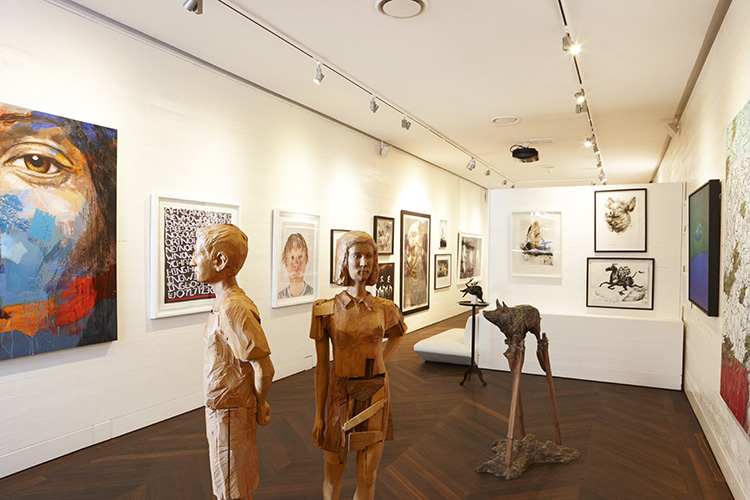
If guests are interested in viewing galleries in Cape Town, Talita, an artist and curator herself, is also available for an insider’s tour of Cape Town’s top art galleries, providing behind-the-scenes access and knowledge of some of the city’s most important art.
Take a look at our guided art tour of Ellerman House in our blog, The Art of The Road Trip.
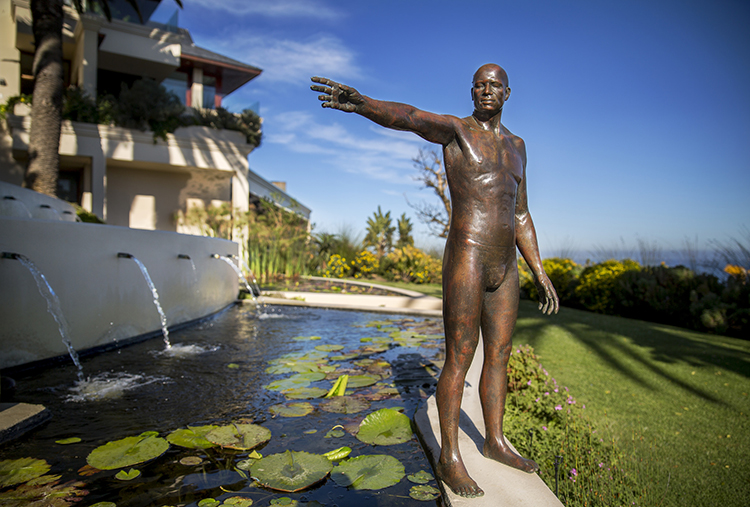
Also noteworthy is the art at AtholPlace Hotel & Villa in Johannesburg, South Africa’s other great city, from the paintings and other works of art on the walls inside the hotel to The Waiting Man, the treasured garden sculpture created by artist Angus Taylor. Read more.
Read more: www.artastherapy.com
